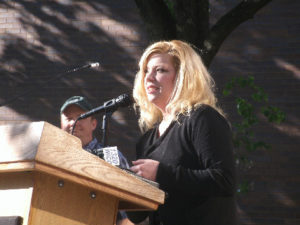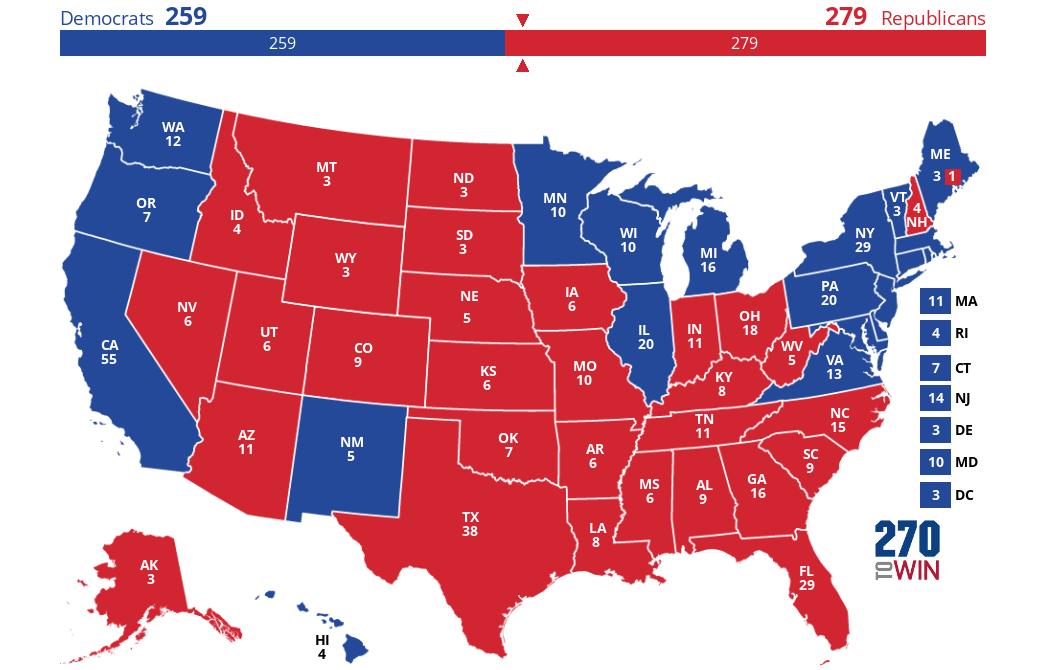With Maryland’s primary in the rear-view mirror and the fields all set, the timing of Delaware’s filing deadline was good for my purposes. By the time they have their September 6 primary, the campaigns will be in full swing in both states.
Unlike Maryland, Delaware doesn’t have a gubernatorial election this year, as Democrat John Carney is in place until 2020. I would expect him to begin his re-election campaign in the early stages of 2019; in the meantime there are three state government offices up for grabs there: Attorney General, State Treasurer, and State Auditor. (The offices are self-explanatory; in Delaware the Treasurer serves the same purpose as Maryland’s Comptroller.)
Since incumbent Delaware AG Matt Denn (a Democrat) is not seeking another term, the race is wide open. Given the perception Delaware is a Democrat-run state, there are four Democrats seeking to succeed Denn while only one Republican is running. On the Democratic side we have:
- Kathy Jennings of Wilmington, who most recently served as Chief Administrative Officer of New Castle County but has also served as Chief Deputy AG in the past.
- Chris Johnson of Wilmington, a private-practice attorney who has specialized in fighting voter suppression, and serves on the Board of Directors of the Delaware Center for Justice.
- Tim Mullaney of Dover, currently the Director of Labor Services for the National Fraternal Order of Police but was Jennings’ predecessor as Chief Administrative Officer of New Castle County.
- LaKresha Roberts of Wilmington, the current Chief Deputy AG under Denn.
On the Republican side, the lone aspirant is Peggy Marshall Thomas of Harbeson, who has served as the Sussex County prosecutor. She bills herself as the first Delaware woman to serve 30 years as a prosecutor. My guess is that she will face either Jennings or Roberts in the general election.
In the case of the state Treasurer, the field for November is already set as just one candidate from three of the on-ballot parties is represented:
- David Chandler of Newark, the Green Party candidate for Treasurer in 2014 and a State Senate seat in 2016.
- Colleen Davis of Dagsboro, who is self-employed “as a consultant to major health-care systems” and running as the Democrat.
- Ken Simpler of Newark, the incumbent Republican first elected in 2014. Prior to that, he was CFO for Seaboard Hotels.
Longtime State Auditor Tom Wagner (a Republican) opted not to seek another term for health reasons, opening the way for a new face in the office. The Democrats have three interested in the position:
- Kathleen Davies of Dover, who has spent six years as the Chief Administrative Auditor.
- Kathy McGuiness of Rehoboth Beach, a longtime Town Commissioner who most recently ran for Lieutenant Governor in 2016.
- Dennis Williams of Wilmington, who served in the Delaware House for six years before losing a primary in 2014.
Trying to succeed his fellow Republican is James Spadola, a former Army Reservist who served in Iraq and has spent time in the finance industry and as a police officer. I’m thinking the race is between Davies and Williams.
But while these are all important elections, my focus this cycle is on the two federal races. For whatever reason, races in Delaware don’t seem to attract the cranks and perennial candidates that we have in Maryland – with one big exception I’ll get to in a moment.
In 2016, Democrat Lisa Blunt Rochester from Wilmington became the first woman of color to represent Delaware in Congress. As such, she has gotten a free ride through her primary and will face one of two Republicans in the November election:
- Lee Murphy of Wilmington, a retired railroad worker who moonlights as an actor. He’s previously run unsuccessfully for New Castle County Council and twice for State Senate.
- Scott Walker of Milford – no, not the governor, but a previous candidate for Congress (2016) who ran that time as a Democrat and finished fifth in a six-person primary.
Most likely it will be a matchup of Murphy vs. Rochester, with the incumbent being a heavy favorite.
The other race pits incumbent Senator Tom Carper against a fellow Democrat in the primary. Carper, yet another Wilmington resident, has been a fixture in Delaware politics, serving as Senator since 2001 after an eight-year run as Governor that began when he arranged to swap positions with then-Governor Mike Castle in 1992. (Castle served in the House from 1993-2011, succeeding the five-term incumbent Carper.) Before all that, he was State Treasurer from 1977-83 – add it all up and Carper has spent the last 41 years in political office.
His opponent hails from Dover, and she is a Bernie Sanders acolyte. Kerri Evelyn Harris describes herself as “a veteran, advocate, and community organizer” who is opposing Carper from the far left. It will be a definite study in contrasts, with the 38-year-old woman of color and mother of two who professes to be a lesbian in her first race facing the 71-year-old political veteran. It will most likely be a successful primary for Carper, who will probably play rope-a-dope with his opponent by denying her the opportunities for face-to-face debates and other methods of low-cost publicity.
That may not be allowed for the general election, where there will be three opposing Carper. On his left may be a repeat of the Harris candidacy with Green Party candidate Demetri Theodoropoulos of Newark holding their banner, while the Libertarian Party runs Nadine Frost, who previously ran for a City Council seat in Wilmington two years ago. (Aside from changing the title, her campaign Facebook page appears to be in that mode.)
While the two main opponents may not be as far apart on the issues on the GOP side, they are geographic opposites in the state. And the quixotic entry of a third person (who is an extreme geographic opposite) may make some impact in the race. That person is Roque “Rocky” De La Fuente, who hails from San Diego but is on the ballot for Senate in Delaware…as well as Florida, Hawaii, Minnesota, Vermont, Washington, and Wyoming. (He’s already lost in California.) Delaware will be his last chance as the remaining states all have their primaries in August.
De La Fuente, who ran as a (mainly write-in) Presidential candidate in 2016 representing both the Reform Party and his American Delta Party – after trying for the Senate seat from Florida as a Democrat (to oppose Marco Rubio) – is undergoing this campaign to point out the difficulties of being an independent candidate. He’s taking advantage of loose state laws that don’t extend the definition of eligibility for a Senate seat beyond the Constitutional ones of being over 30 and an “inhabitant” of the state at the time of election – in theory he could move to Delaware on November 1 and be just fine.
So the question is whether the 1 to 3 percent De La Fuente draws (based on getting 2% in California’s recent primary) will come from the totals of Rob Arlett or Gene Truono.
Truono is a first-time candidate who was born and raised in Wilmington and spent most of his life in the financial services industry, most recently as Chief Compliance Officer for PayPal. While he’s lived most of his life in Delaware, he’s also spent time in Washington, D.C. in the PayPal job as well as New York City with JP Morgan Chase and American Express.
From the extreme southern end of Delaware near Fenwick Island, Arlett owns a real estate company, is an ordained Christian officiant and onetime Naval reservist, and has represented his district on Sussex County Council since 2014. But there are two things Arlett is more well-known for: he spearheaded the drive to make Sussex County a right-to-work county and, while he’s never undertaken a statewide campaign for himself he was the state chair of Donald Trump’s 2016 Presidential campaign.
Since it’s highly unlikely De La Fuente will emerge from the primary, the question becomes which of these two conservatives (if either became Senator, it’s likely their actions will fall under the Reagan 80% rule for the other) will prevail. Obviously Truono has the bigger voter base in New Castle County, but he’s laboring as a basic unknown whereas Arlett may have more familiarity with voters around the state as the Trump campaign chair. But would that repel moderate Republicans?
Of the statewide races in Delaware, I think the Senate one is the most likely to not be a snoozer. I’ll be an interested observer, that’s for sure.




 Click the map to create your own at
Click the map to create your own at